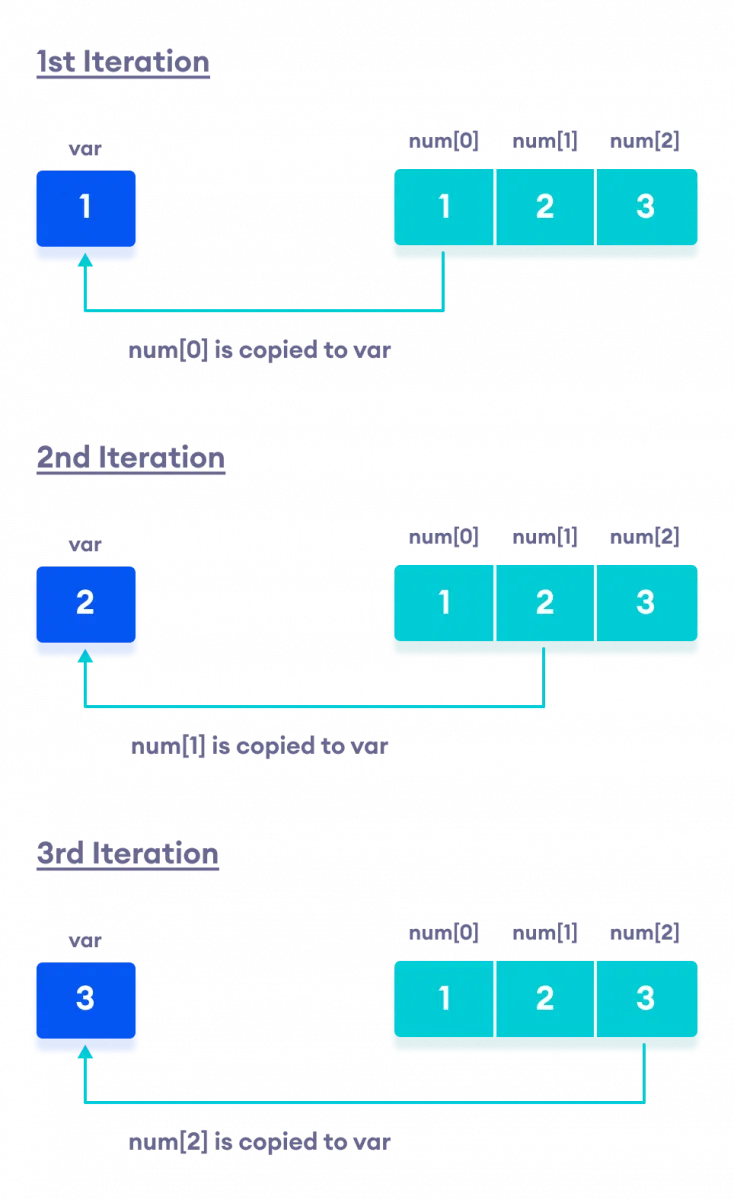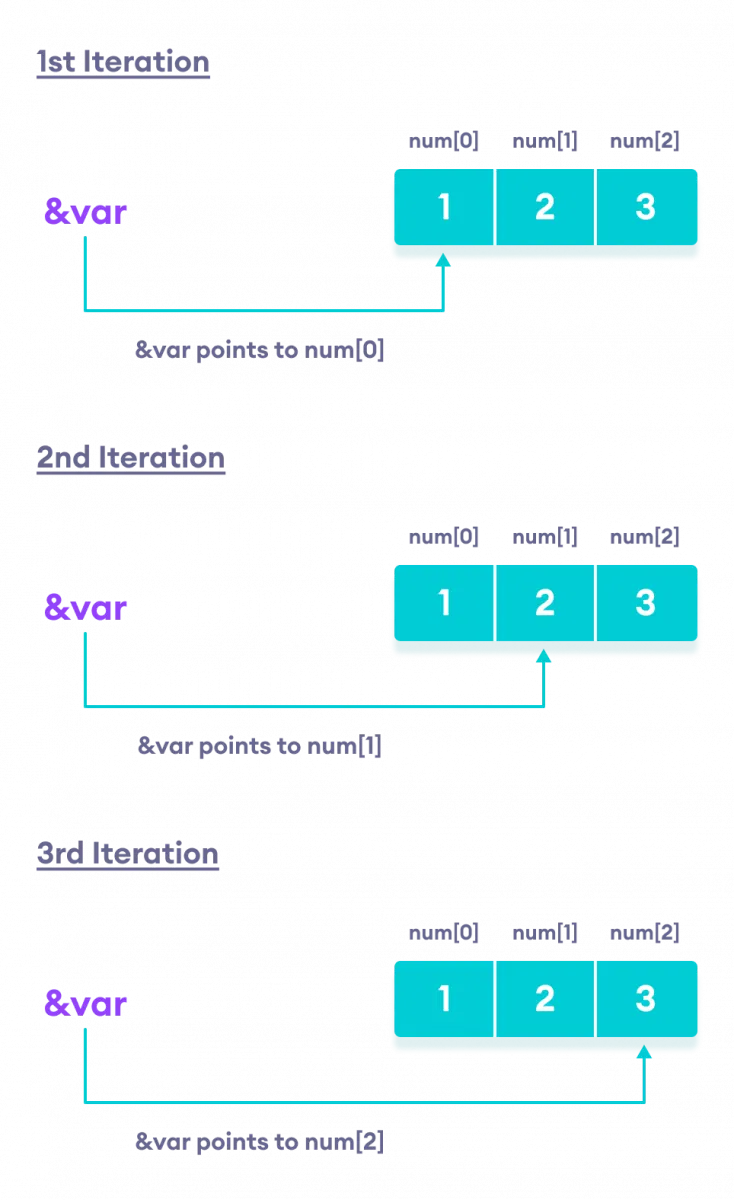C++11 introduced the ranged for loop. This for loop is specifically used with collections such as arrays and vectors.
For example,
// initialize an int array
int num[3] = {1, 2, 3};
// use of ranged for loop
for (int var : num) {
// code
}
Here, the ranged for loop iterates the array num from beginning to end. The int variable var stores the value of the array element in each iteration.
Its syntax is,
for (rangeDeclaration : rangeExpression) {
// code
}
In the above example,
- rangeDeclaration -
int var - rangeExpression - num

Example 1: Ranged for Loop Using Array
#include <iostream>
using namespace std;
int main() {
// initialize array
int numArray[] = {1, 2, 3, 4, 5};
// use of ranged for loop to print array elements
for (int n : numArray) {
cout << n << " ";
}
return 0;
}
Output
1 2 3 4 5
In this example, we declared and initialized an int array named numArray. Here, we used the ranged for loop to print out the elements of numArray.
- first iteration - n takes the value of the first member of the array, which is
1 - second iteration - n takes the value of
2and is then printed - ...and so on.
Note: The ranged for loop automatically iterates the array from its beginning to its end. We do not need to specify the number of iterations in the loop.
Example 2: C++ Ranged for Loop Using Vector
#include <iostream>
#include <vector>
using namespace std;
int main() {
// declare and initialize vector
vector<int> num_vector = {1, 2, 3, 4, 5};
// print vector elements
for (int n : num_vector) {
cout << n << " ";
}
return 0;
}
Output
1 2 3 4 5
Example 3: Declare Collection inside the Loop
#include <iostream>
using namespace std;
int main() {
// define the collection in the loop itself
for (int n : {1, 2, 3, 4, 5}) {
cout << n << " ";
}
return 0;
}
Output
1 2 3 4 5
Here, we have declared the collection within the loop itself i.e.
rangeExpression = {1, 2, 3, 4, 5}
This is also a valid way of using the ranged for loop, and it works in the same way as when we use an actual array or vector.
C++ Ranged for Loop Best Practices
In the above examples, we have declared a variable in the for loop to store each element of the collection in each iteration.
int num[3] = {1, 2, 3};
// copy elements of num to var
for (int var : num) {
// code
}
However, it's better to write the ranged based for loop like this:
// access memory location of elements of num
for (int &var : num) {
// code
}
Notice the use of & before var. Here,
int var : num- Copies each element of num to the var variable in each iteration. This is not good for computer memory.int &var : num- Does not copy each element of num to var. Instead, accesses the elements of num directly from num itself. This is more efficient.
Note: The & operator is known as the reference operator. We will learn more about it in C++ pointers.

Note: If we are not modifying the array/vector/collection within the loop, it is better to use the const keyword in range declaration.
// collection is not modified in the loop
for (const int &var : num) {
// code
}